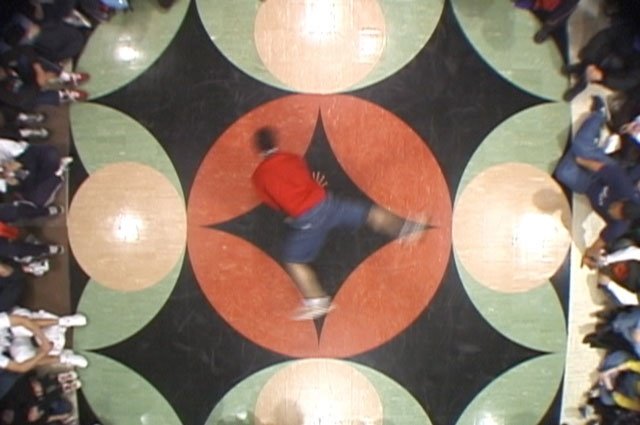Five decades of hip-hop culture at OMCA's dope new exhibit
Perhaps never before has an art museum felt so...street.
Enter the Great Hall at Oakland Museum of California (OMCA) to get the flavor (flav) of Oakland, Brooklyn, and L.A. hip-hop culture.
Descending down the stairs for the media preview of Respect: Hip-Hop Style & Wisdom, which opens Saturday, I was immediately hit with the heavy sounds of Simon Says by Pharoahe Monch. I was headed in the right direction. As I walked past DJ Big Russ, of the World Famous Rick & Russ Show, who was there spinning IRL, and through the double doors, I was met by an old-school turntable and a quote from the rapper Jahi: "Thomas Edison invented the phonograph and hip-hop turned it into a musical instrument."
This is going to be interesting.
The first part of the exhibition is the dojo, an interactive space dedicated to practice, performance and events. Two large screens on the left show a video mix, by Los Angeles–based DJ Mike Relm, of music videos, breakdancing, scenes from the riots in South Central L.A., chess players, and kung fu scenes from Ip Man. There are stations throughout where visitors can experiment with scratching on real beat-making equipment, sit on the bleachers to play chess, or create tunes with the iPad setups organized by Tommy Shepherd of the Grammy-nominated Alphabet Rockers. There will also be opportunities to participate in graffiti-making, pick up some dance moves and more as the museum rolls out its schedule of demonstrations and workshops.
Around the corner stands a more traditional exhibit, though still not quite anything you'd expect from a prestigious museum. The walls are plastered with photographs of moments in hip-hop history—a man and a dog on the lower east side of New York by Jamel Shabazz; a blazing fire in south Bronx by Martha Cooper; and portraits of black youth by the insanely talented Kehinde Wiley (who you may have heard painted the official portrait of Barack Obama).
Upon entering the back gallery, you can't help but be drawn to the 1964 Chevy Impala, sitting impossibly low to the floor with a description that resonates beyond hip-hop culture: "Your car is your castle. It's an escape pod or a party pad—a public display of independence and swagger." Word.
A multitude of thought-provoking installations grace the space. Behind the car, a graffiti artist is spraying the wall in perpetuum. To the left, a barbershop display with mirror and chair; and in the center sits a massive stack of books with reads like Africa in Stereo, Thelonious Monk, An American Dilemma, and the Life of Langston Hughes; in front of it a single microphone with a sign that reads: Speak your truth authentically and from the heart. (The mic is on, though no one found the courage to use it). There are even ties to spirituality as seen in Sanford Biggers' Mandala of the B-Bodhisattva II, where the dance floor in the video is a sculpture referencing Buddhist mandala art. The circular shapes created by the arms and legs of breakdancers are seen as objects of meditation. Work from notable artists like Martha Cooper and Shepard Fairey are everywhere, capturing the multifaceted layers of hip hop culture.
And then there are the artifacts—a juxtaposition displayed in cases. In one, a selection of designer items referencing hip hop like a Moschino spray can shoulder bag, Chanel headphone necklace, Giuseppi Zanotti studded crystal no-heel wedge shoes, and Dolce & Gabbana headphones plastered in Swarovski crystals. In another, iconic streetwear including a High Roller jacket from Troop, a Run DMC Adidas sweatshirt, gold chains galore, and of course a boombox.
At one point, Roberto "Fly" Hernandez got into his 6-4 and bounced it around a bit and got the crowd just rowdy enough before he turned the engine off and stepped out.










// Respect: Hip-Hop Style & Wisdom (March 24 through August 12, 2018) at Oakland Museum of California, 1000 Oak St. (Oakland), museumca.org
See it on 7x7.



